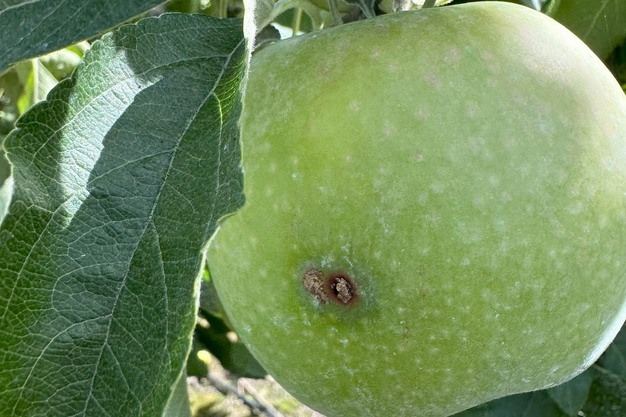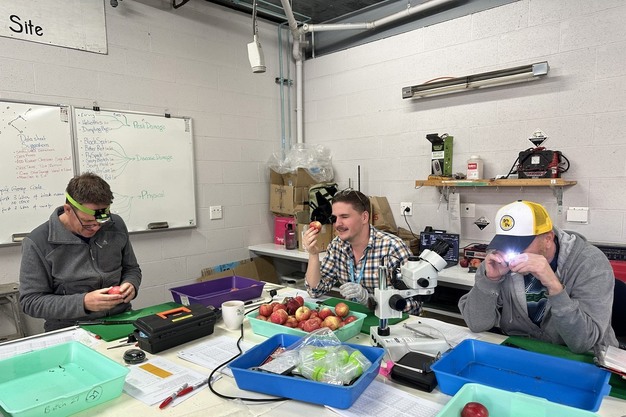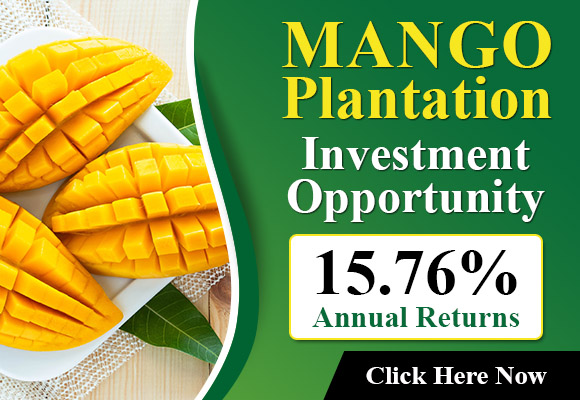Early research results are showing how orchard and packhouse practices can produce pest-free fruit for Asian markets. A large-scale study in Tasmania and southeast Queensland is generating data to support expanded access into premium markets by demonstrating a systems approach to codling moth management that does not require fumigation.
Developing a systems approach
Fumigation remains a treatment option for some export markets, but it can affect fruit quality. APAL Head of Trade Jenny Van de Meeberg said: “The Australian apple industry export strategy aims to make it more feasible for growers to target the highest value markets with premium quality fruit. Reducing reliance on fumigation is a critical part of our strategy.”
APAL, Fruit Growers Tasmania, Tasmanian growers, and Biosecurity Tasmania are partners in the four-year Hort Innovation Safe Trade project. CSIRO’s Dr Judith Stahl leads the apple case study, which is quantifying how orchard surveillance, trapping, and packhouse grading reduce codling moth risk. Data are being collected from orchards, packhouses, and laboratories, with more than 15,000 apples destructively assessed this season.
 © APAL
© APAL
First orchard results
Preliminary results indicate that pheromone trap placement within a block is less critical than targeting historical hotspots. In unmanaged orchards, fruit damage from codling moth larvae reached up to 40 percent, highlighting the pest’s impact. However, in blocks under management, few apples contained larvae post-harvest. Research also showed that harvested apples left in orchards under high pest pressure can suffer new damage, reinforcing the importance of removing fruit promptly.
Packhouse practices and optical grading
Packhouse measures are also under evaluation. Optical grading systems, while not designed to detect insect infestation, have been tested on more than 15,000 apples from high-pressure orchards. Depending on the variety, detection rates for codling moth damage ranged between 60 and 75 percent. All apples containing larvae were rejected. Dr Maryam Yazdani, leading the optical grading research, noted that external damage detection performed better than internal systems. Manual removal of damaged fruit remains important in the packing process.
Postharvest measures and modelling
Additional laboratory studies and mathematical models are assessing the phytosanitary risk if larvae bypass orchard and packhouse controls. These findings aim to strengthen the scientific case for recognising commercial practices as part of export protocols.
 © APAL
© APAL
Impact for growers
Engagement with government and industry is ongoing to ensure research aligns with market access negotiations. Data gathering will continue through 2025 and 2026 to provide science-backed tools to demonstrate reduced risk. The objective is to secure entry into more Asian markets without fumigation, supporting Australian apple growers in maintaining premium export opportunities.
 © APALFor more information:
© APALFor more information:
APAL
Tel: +61 3 9329 3511
Email: [email protected]
www.apal.org.au
Source: The Plantations International Agroforestry Group of Companies
